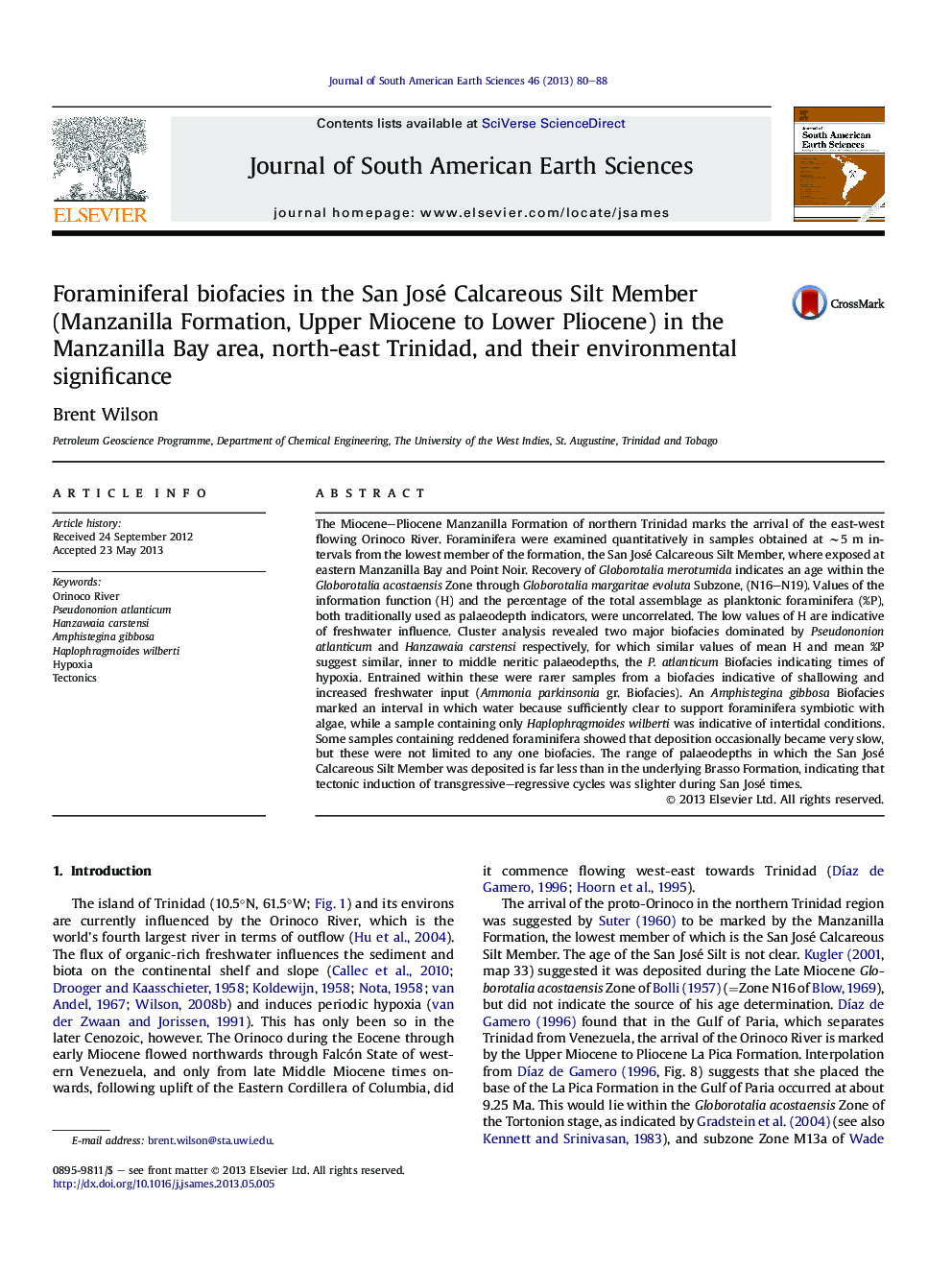| کد مقاله | کد نشریه | سال انتشار | مقاله انگلیسی | نسخه تمام متن |
|---|---|---|---|---|
| 4682424 | 1635163 | 2013 | 9 صفحه PDF | دانلود رایگان |

• The San José Calcareous Silt Member was deposited under considerable freshwater influence.
• The abundance of Pseudononion atlanticum and Hanzawaia carstensi indicate shallow neritic palaeodepths.
• The water was occasionally clear enough for Amphistegina gibbosa.
• Haplophragmoides wilberti indicate at least one intertidal interlude.
• The abundance of planktonic foraminifera and benthonic foraminiferal diversity are uncorrelated.
The Miocene–Pliocene Manzanilla Formation of northern Trinidad marks the arrival of the east-west flowing Orinoco River. Foraminifera were examined quantitatively in samples obtained at ∼5 m intervals from the lowest member of the formation, the San José Calcareous Silt Member, where exposed at eastern Manzanilla Bay and Point Noir. Recovery of Globorotalia merotumida indicates an age within the Globorotalia acostaensis Zone through Globorotalia margaritae evoluta Subzone, (N16–N19). Values of the information function (H) and the percentage of the total assemblage as planktonic foraminifera (%P), both traditionally used as palaeodepth indicators, were uncorrelated. The low values of H are indicative of freshwater influence. Cluster analysis revealed two major biofacies dominated by Pseudononion atlanticum and Hanzawaia carstensi respectively, for which similar values of mean H and mean %P suggest similar, inner to middle neritic palaeodepths, the P. atlanticum Biofacies indicating times of hypoxia. Entrained within these were rarer samples from a biofacies indicative of shallowing and increased freshwater input (Ammonia parkinsonia gr. Biofacies). An Amphistegina gibbosa Biofacies marked an interval in which water because sufficiently clear to support foraminifera symbiotic with algae, while a sample containing only Haplophragmoides wilberti was indicative of intertidal conditions. Some samples containing reddened foraminifera showed that deposition occasionally became very slow, but these were not limited to any one biofacies. The range of palaeodepths in which the San José Calcareous Silt Member was deposited is far less than in the underlying Brasso Formation, indicating that tectonic induction of transgressive–regressive cycles was slighter during San José times.
Journal: Journal of South American Earth Sciences - Volume 46, October 2013, Pages 80–88